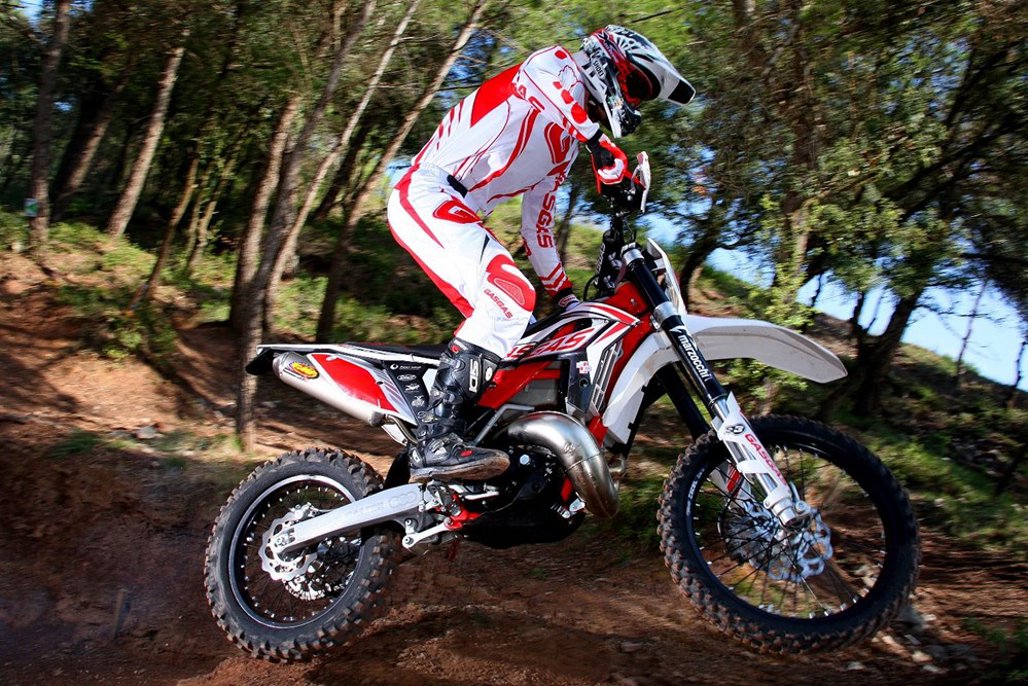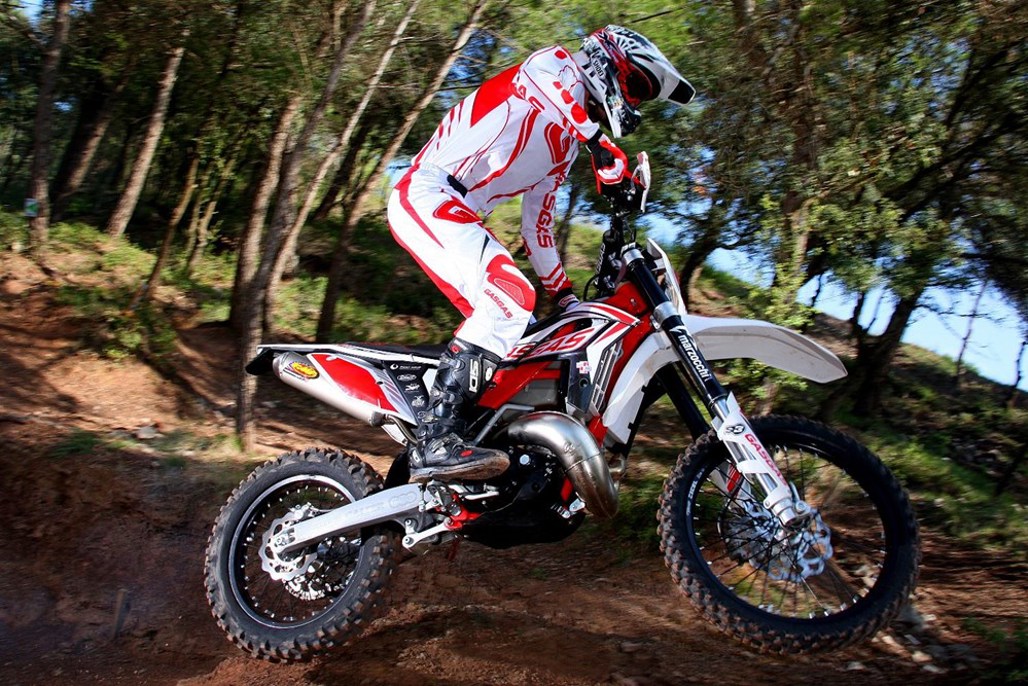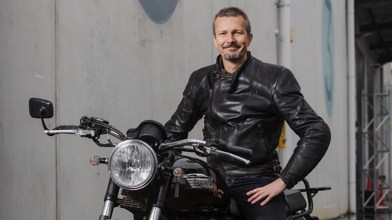Successful enduro riders are a taciturn breed, used to thinking their way rapidly across gnarly terrain with a rally-style mix of cross-country ‘touring’ stages and time trials, all of it more or less tricky and technical, and mostly spent alone – without an audience, a nearby pit, or a jostling crowd of other riders.
They know whether a bike will do the deed, but waxing lyrical ain’t their thing.
So getting useful feedback from even the most expert of riders can be challenging. The latest Gas Gas EC300 two-stroke – how’s the new start system? ‘Good.’ The engine changes? ‘Good.’ The suspension? ‘Good now, too.” This will be the world’s shortest review…
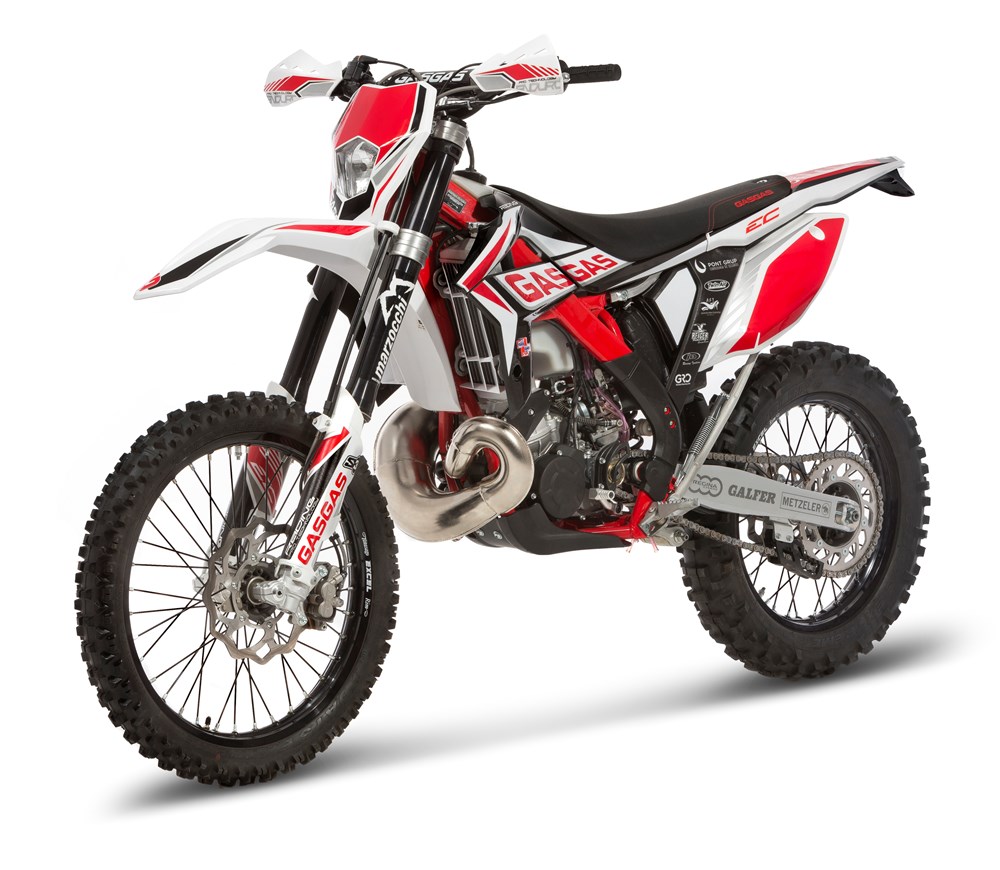 But dig a little, and you’ll find there’s a lot more than ‘good’ to this update. Clearly the Spanish brand hasn’t been resting on its castanets, and it’s made a long list of changes, not least to the engine or, as the factory blurb puts it, to “the depths of its heart,” and to the starter. Our tame tester says the more compact electric-start system is lighter and more efficient, and Gas Gas has stepped up to the KTM plate by fitting an externally-adjustable power valve for this 300cc single-cylinder liquid-cooled two-stroke.
But dig a little, and you’ll find there’s a lot more than ‘good’ to this update. Clearly the Spanish brand hasn’t been resting on its castanets, and it’s made a long list of changes, not least to the engine or, as the factory blurb puts it, to “the depths of its heart,” and to the starter. Our tame tester says the more compact electric-start system is lighter and more efficient, and Gas Gas has stepped up to the KTM plate by fitting an externally-adjustable power valve for this 300cc single-cylinder liquid-cooled two-stroke.
That lets you easily alter engine response, so you can limit power and revs for snow or slick mud, choose smooth delivery for technical conditions, add pep for a fast circuit, or torque at low rpm for a very fast circuit, “Though the standard setting seems to work well in New Zealand conditions.”
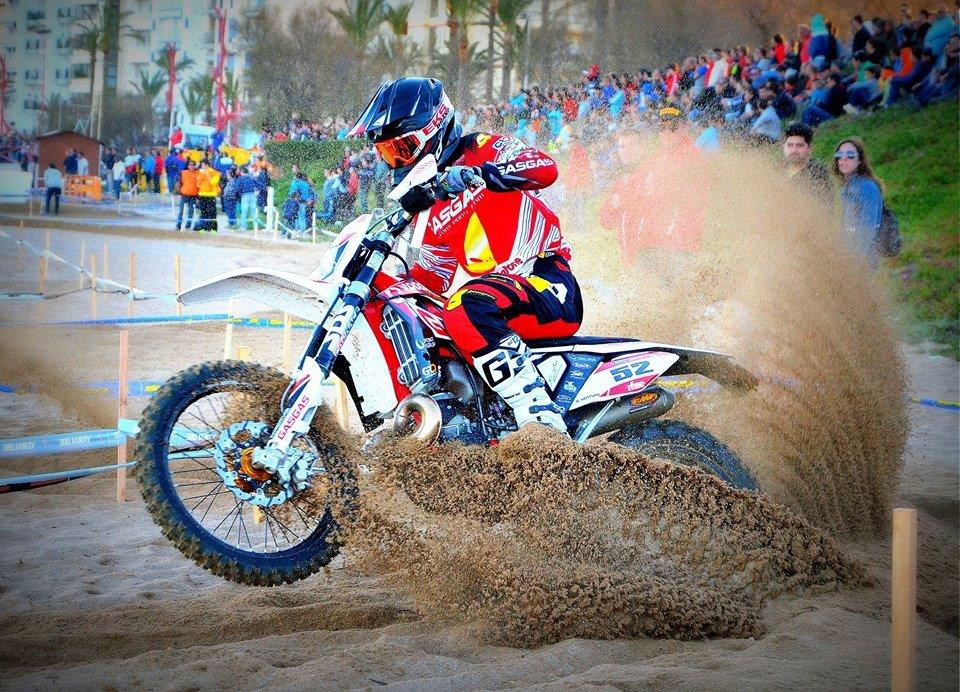 The bike was ridden in Riverhead’s technical and sometimes slick forested terrain, the motor proving smooth and tractable at low revs with strong power progression as the rpm builds. “Late in the rev range it goes a bit flat and vibrates a bit too, but in normal riding you’ll have short-shifted before that.”
The bike was ridden in Riverhead’s technical and sometimes slick forested terrain, the motor proving smooth and tractable at low revs with strong power progression as the rpm builds. “Late in the rev range it goes a bit flat and vibrates a bit too, but in normal riding you’ll have short-shifted before that.”
The exhaust’s been redesigned, there’s a new silencer, and alterations to the suspension include new settings for the Marzocchi forks and a change to Reiger shocks, which got the thumbs-up too. “It’s now plush, absorbs roots nicely, and it’s confidence-inspiring.” Our tester said it felt as if it’d work well in sand too, “It felt balanced enough to work anywhere, if it works well with poxy roots and doesn’t bottom when you’re going fast it’ll go well in sand.”
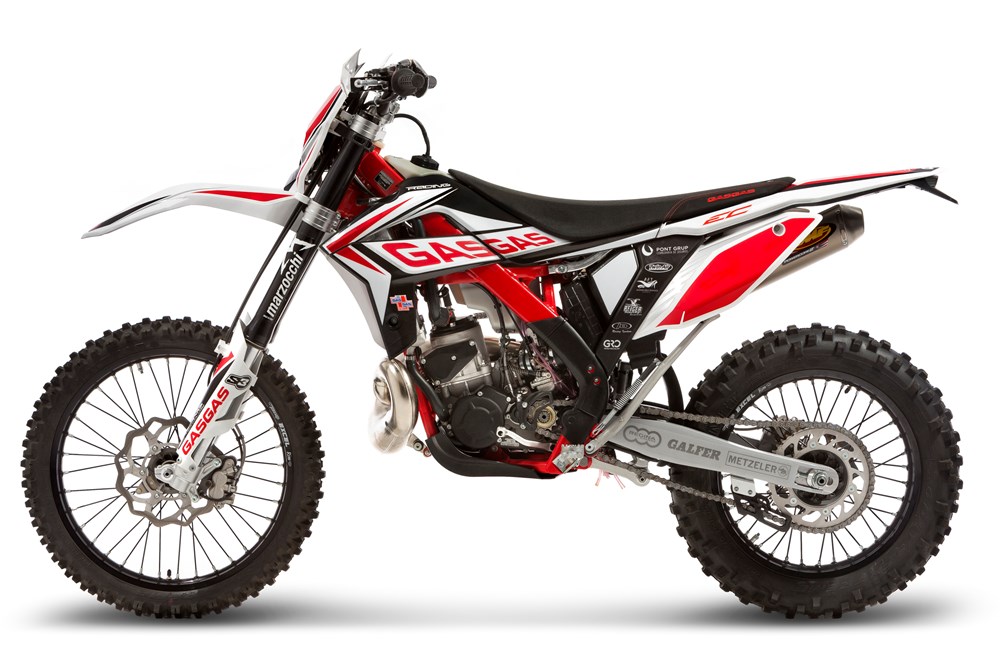 Riders have commented this model has been a tad slow in the steering, “You’d have to wrestle it through corners, but now it turns really well. It’s way more agile, and will take an inside line where before it wanted to run wide. It wants to hit that apex, but it’s still stable when you’re going fast, so it’s pretty much right.”
Riders have commented this model has been a tad slow in the steering, “You’d have to wrestle it through corners, but now it turns really well. It’s way more agile, and will take an inside line where before it wanted to run wide. It wants to hit that apex, but it’s still stable when you’re going fast, so it’s pretty much right.”
It stops well, too. The Galfer 260mm ‘wave’ disc front and 220mm disc out back gripped by twin-piston front and single-piston rear Nissin calipers are really strong, our rider was impressed with their performance, “and there’s a good range of adjustment in the front lever to suit a wide range of hand size.”
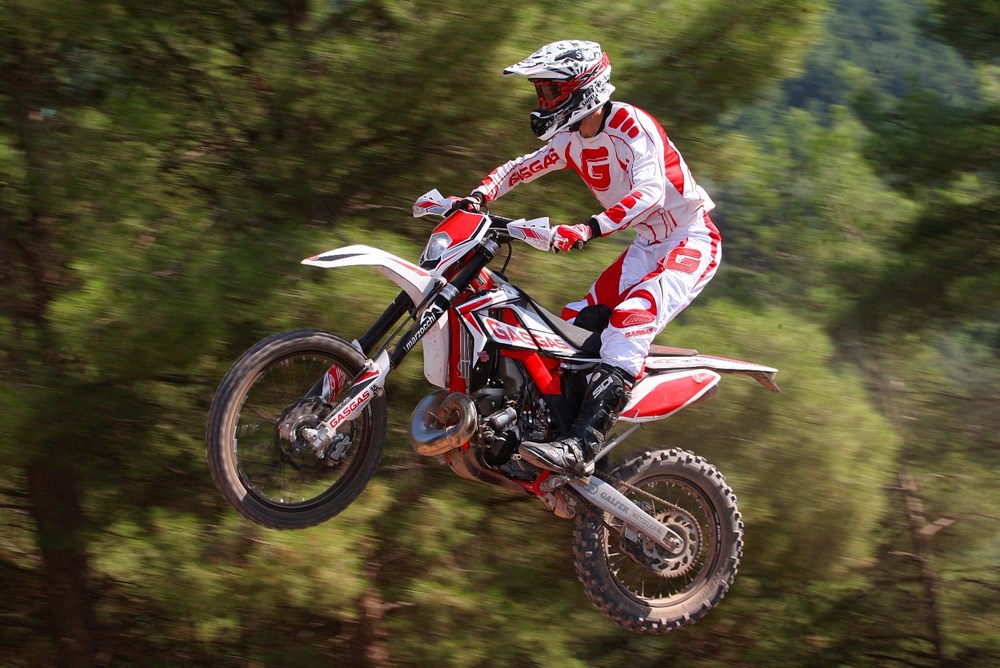 Gas Gas says other differences to this model include new antifriction bushings for the front brake and clutch, minor changes to the frame structure, new footpegs and supports, and better seat foam, covered in grippier fabric. That said, our admittedly tall tester commented the thin foam at the seat back is “hard on the arse,” but overall, “It’s now a good bike, it’s come a long way, it’s at least as good as the KTM. It’s a good all-round bike that’ll suit tall trail riders, too.”
Gas Gas says other differences to this model include new antifriction bushings for the front brake and clutch, minor changes to the frame structure, new footpegs and supports, and better seat foam, covered in grippier fabric. That said, our admittedly tall tester commented the thin foam at the seat back is “hard on the arse,” but overall, “It’s now a good bike, it’s come a long way, it’s at least as good as the KTM. It’s a good all-round bike that’ll suit tall trail riders, too.”
That ‘good’ word again… A word to the Christmas fairy? A thesaurus in the stocking come December.
